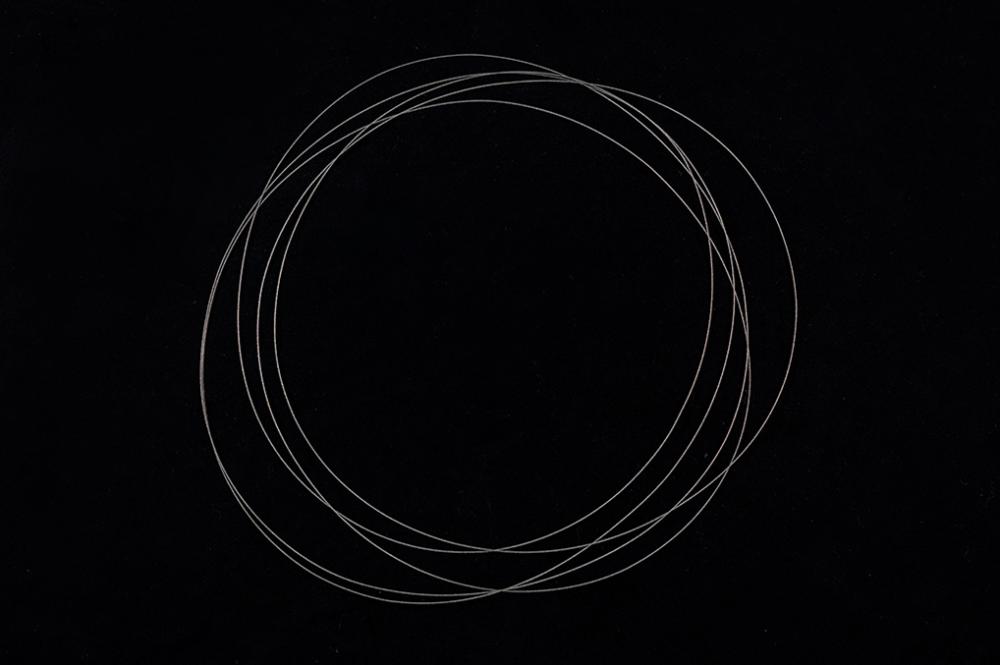Diamond Wire Loop
Diamond Wire loop is used for
cutting brittle materials, such as silicon crystal, ceramics, graphite, glass,
gemstones and precious metals. The diamond particles are consolidated on the
ring-shaped metal wire, and the cutting is performed in one direction. Compared
with single-wire reciprocating cutting, the wire Faster speed and lower
roughness of cutting surface. Diamond wire is suitable for photovoltaic,
electronic information, crystal, magnetic materials and other industries. Our company
can produce Brass Plated Steel Sawing Wire , Brass Plated Steel Core Wire ,
Brass Plated Steel Wire Rope , Galvanized Steel Wire Rope , stainless steel
wire rope , diamond wire , diamond wire loop , Diamond Wire Saw . Welcome
friends in need to call for communication and cooperation.
Looped Wire Rope,Looped Cutting Wire,Diamond Looped Wire Jiangyin Baoneng Precision New Material Co.,LTD , https://www.baonengwire.com
To sum up the reasons, in addition to the current increase in seasonal demand, the reduction in domestic supply, port inventory decline, traders and other factors also play a boost role. However, based on the peripheral chemical products and the overall fertilizer market is still affected by the current weak environment, it is expected that Huanghou City will be mainly warmer, there will be no substantial price adjustment.
—— The seasonal demand increased to stimulate the market to heat up. In September, the domestic market began to fall into fertilizer preparation and use, and the trading volume of ammonium phosphate increased accordingly. The demand for diammonium phosphate gradually increased, and the market supply was tight. This can be seen from the demand conditions in East China and North China. Although the monoammonium phosphate market is slightly light at present, it has not experienced a sharp decline. The market outlook will still have certain demand as a support. At present, markets such as Shandong and Henan have also seen a momentum of recovery, which will form a strong force for the upstream market. The good support factor. At the same time, the export market of phosphorus and compound fertilizers has continued to improve in the near future, which will inevitably result in a tight market for domestic phosphate and compound fertilizers. As a result, companies will also increase their operating rate and increase the procurement of upstream raw materials. It was also learned that from June to August, domestic chemical companies stopped or started to work under low load, and the use of *yellow decreased. With the increase in the operating rate of enterprises and the preparation of raw materials in advance, there will also be a wave of supplements to the stock market, which is expected to boost the overall outlook.
—— Reduction in domestic supply After the market moved ahead, due to the sharp decline in international crude oil prices, the operating rate of domestic petrochemical companies was affected, resulting in a decrease in production of yellow products. According to incomplete statistics, the yellow production of Sinopec and PetroChina companies fell by more than 10% month-on-month in July, which is one of the reasons that domestic imports rose by more than 30% month-on-month. In addition, the reduction of inventory plans by domestic businessmen led to a continuous decline in commercial inventory. After the gradual digestion in August, the inventory of domestic downstream companies has also dropped to a low level, and the overall supply has decreased, which is also an important positive factor supporting the outlook for the market.
- The decline in port stocks has boosted the market. Currently, 70% of China's domestic imports are dependent on imports, and most of the imports have formed commercial inventories at major ports, which may play an important role in constraining or promoting the overall domestic market. Therefore, changes in port inventory are One of the main indicators of market trends. According to statistics, from January to July domestic imports of 5.44 million tons of yellow, a year-on-year decrease of 4.53%. At the same time as imports fell, port inventories also showed a declining trend, of which the eight major ports in the statistics accounted for 1.31 million tons on August 1 and fell to 1.2 million tons on September 1, a decrease of 8.3% from the previous month. The declining inventory, coupled with the high price of international * yellow, prompted the port CIF price to rise. At the beginning of September, the CIF price of ports had risen slightly by 3%, which was bound to increase the potential positive outlook for the strengthening of the market.
- Traders' pressure to push reluctantly sell-ups The push for an upbeat atmosphere is driven by the decline in domestic stocks and the favorable growth in downstream demand. Traders are enthusiastic and enthusiastic in buying goods, the low-end prices are gradually disappearing, and businesses reluctant to sell their goods have increased their psychological pressure and reduced their shipments in the short term. The current high-end prices have been reported to more than 2,000 yuan, and there is still a continuous warming trend, if the recent international price increases again, and the continuous decline in imports, do not rule out the domestic market will usher in a wave of cargo prices in the medium-term warming up prices.

* Huanghou City will moderate up
The domestic yellow market, which has been running smoothly for about three months, began to heat up after entering September. The mainstream transaction price rose to 1,850 yuan (ton price, the same below), and the high-end market was more than 1,900 yuan, an increase of around 3%. The increase started from the low-end prices in the northeast and southwest regions, and then prompted a slight increase in prices in North China and Central China, which is expected to increase the average price of mainstream transactions in the near-term period, which in turn will drive the overall domestic average price to rise further.